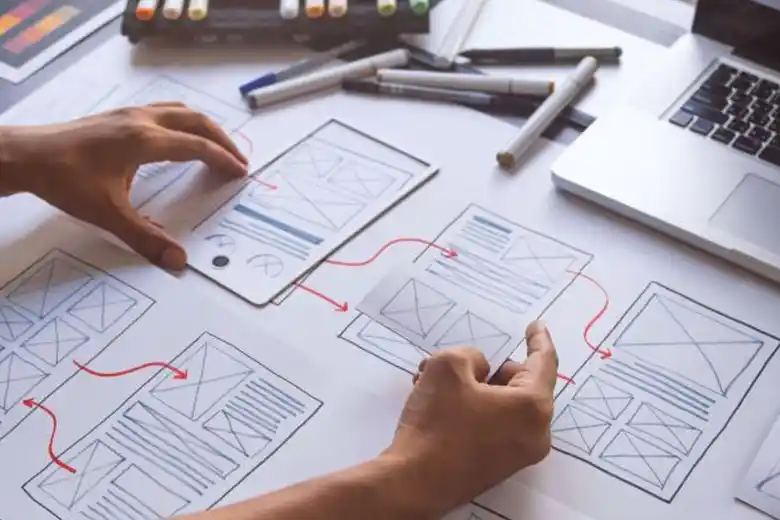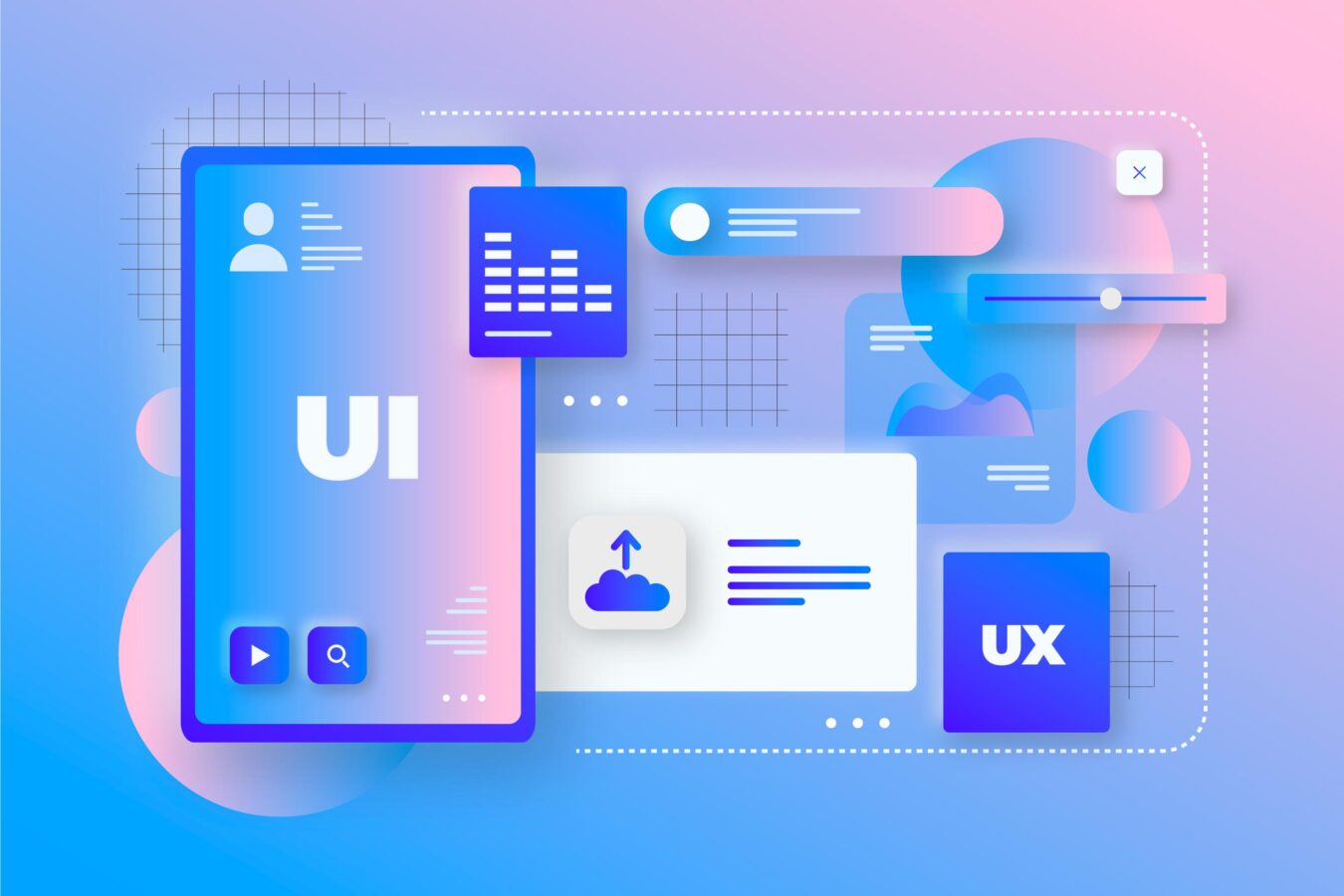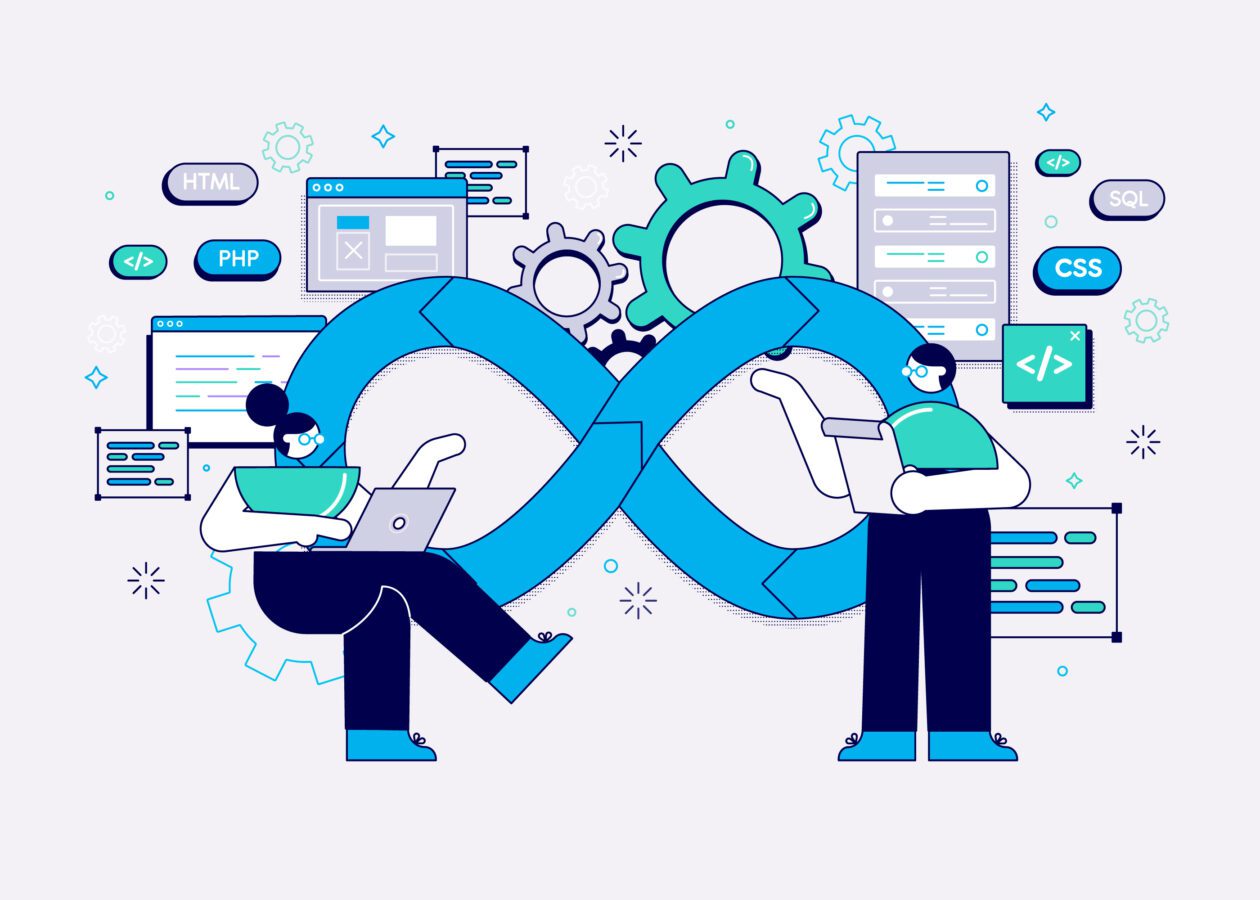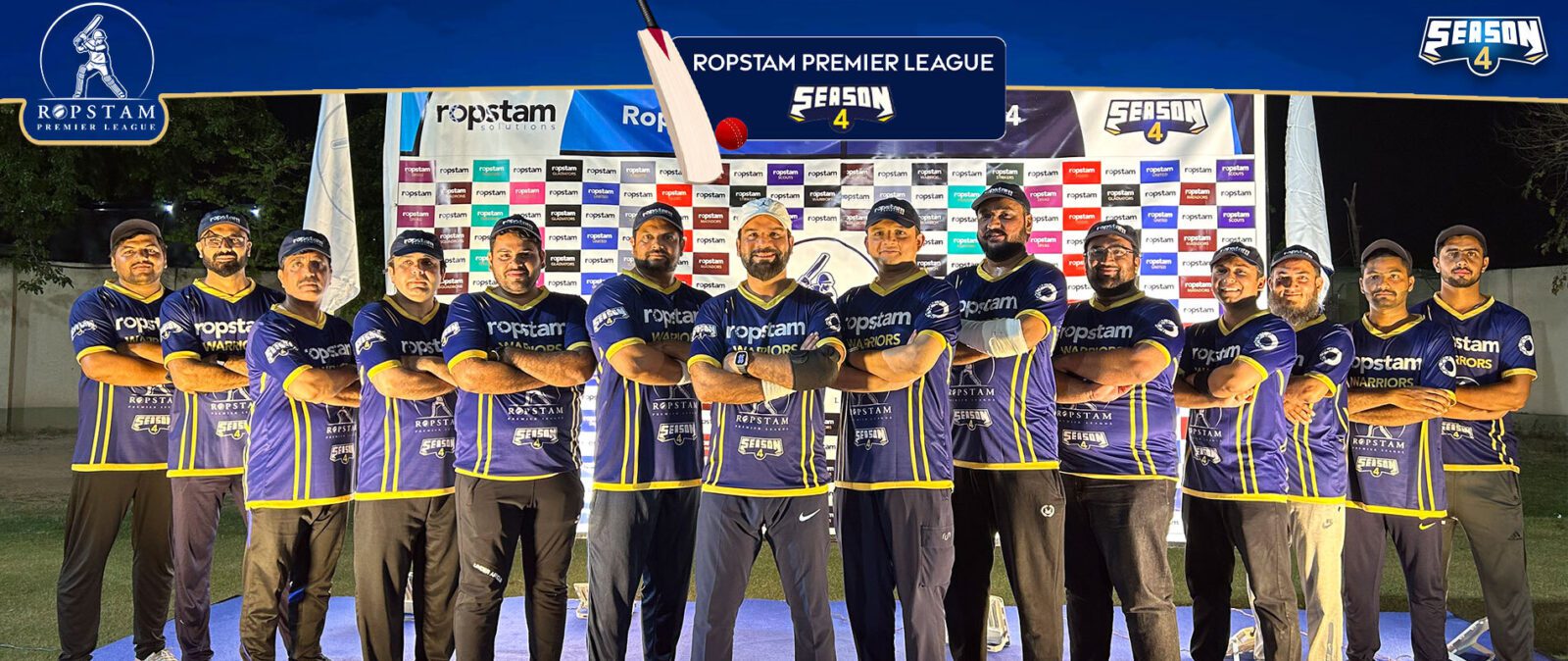In the context of digital product development, brand strategy, and UI/UX design are often seen as separate entities. However, when combined effectively, they can create a powerful force that drives brand success.
While brand strategy is often associated with established brands, its importance in startups and emerging brands cannot be overstated. A strong brand identity provides a clear direction for product development, ensuring that every touchpoint aligns with the brand’s values and messaging.
UI/UX design, on the other hand, focuses on creating a seamless and intuitive user experience. A well-designed interface not only enhances user satisfaction but also reinforces the brand’s identity. When brand strategy and UI/UX design work together, they can create a cohesive and memorable brand experience. If you are still confused about the relationship between a compelling UI/UX design and the brand strategy, keep on reading this blog.
Significance of UI/UX Design
We are living in an era where UI/UX design has become a cornerstone of every successful product and brand strategy. Its importance extends far beyond creating visually appealing interfaces; it plays a crucial role in shaping user perceptions, driving engagement, and ultimately, determining the success of digital products. Let’s understand the key aspects that highlight the significance of UI/UX design.
1. Enhancing User Satisfaction and Loyalty
In simpler words, UI/UX design is about creating user-friendly, intuitive experiences that users enjoy. When a product is easy to navigate and use, it naturally leads to higher user satisfaction. This positive experience fosters loyalty, encouraging users to return to the product repeatedly and even recommend it to others.
In a world where user attention is increasingly scarce, a well-designed interface can be the difference between a product that’s used once and forgotten, and one that your customers love.
2. Driving Business Growth
Good UI/UX design isn’t just about making things look pretty – it has a direct impact on a company’s bottom line. By streamlining user journeys and reducing friction points, effective design can increase conversion rates, whether that means more sales, sign-ups, or other desired actions.
Moreover, satisfied users are more likely to become brand advocates, reducing customer acquisition costs through word-of-mouth marketing. In this way, UI/UX design becomes a powerful driver of business growth and sustainability.
3. Improving Accessibility and Inclusivity
An often overlooked but crucial aspect of UI/UX design is its role in making digital products accessible to a wider audience. Good design considers users with different abilities, ensuring that products are usable by people with visual, auditory, motor, or cognitive impairments.
Needless to say, by prioritizing accessibility, UI/UX designers not only expand the potential user base but also demonstrate a commitment to inclusivity, which can significantly enhance brand perception.
4. Facilitating Innovation and Adaptation
In the modern era, UI/UX design serves as a bridge between emerging technologies and user needs. Designers are often at the forefront of implementing new technologies in ways that are understandable and beneficial to users. Whether it’s integrating AI-powered features or adapting interfaces for new devices like wearables or VR headsets, UI/UX design facilitates innovation while ensuring that products remain user-friendly and relevant.
5. Reducing Development Costs and Time
For every business owner, investing in UI/UX design early in the product development process can lead to significant cost savings down the line. Moreover, a well-thought-out design can simplify the development process to a significant extent, providing developers with clear guidelines and reducing the need for last-minute changes or fixes.
Why is UI/UX Design Important for Your Business?
As a business owner, you might wonder why investing in UI/UX design is crucial. Here’s how it can significantly impact your business success:
1. Optimized for Mobile Users
In today’s mobile-first world, having a design optimized for smartphones and tablets is non-negotiable. A well-executed UI/UX design ensures your website or app functions seamlessly across all devices, particularly mobile. This mobile optimization is crucial because over 50% of global web traffic comes from mobile devices. If your site isn’t mobile-friendly, you’re potentially losing half your audience.
Moreover, you must remember that Google prioritizes mobile-optimized sites in its search rankings, meaning better UI/UX design can also boost your SEO efforts, driving more organic traffic to your business.
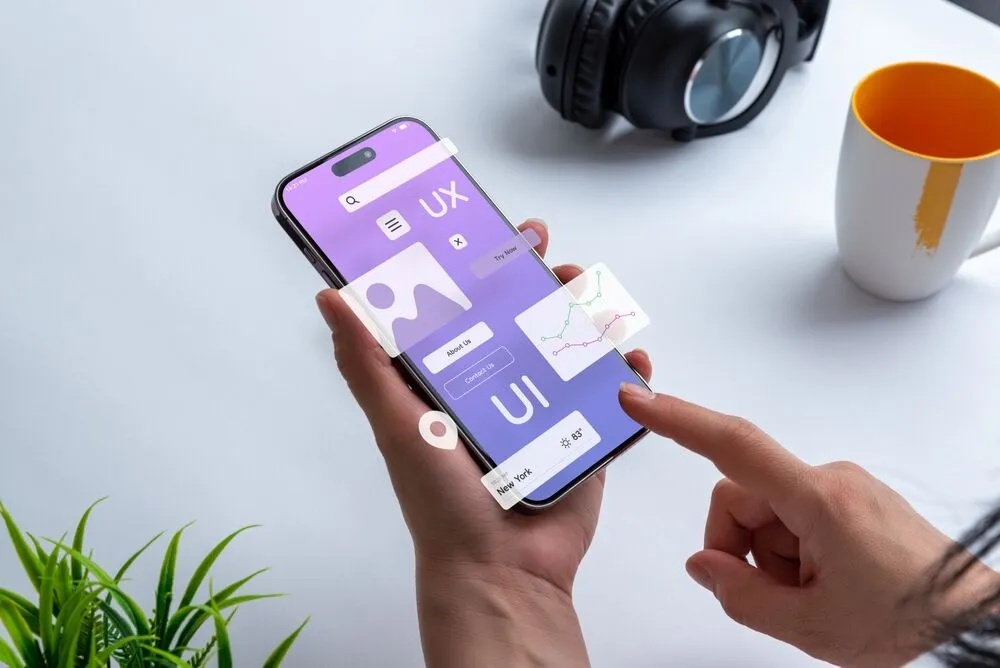
2. Building Trust
UI/UX design plays a pivotal role in establishing trust with your audience. A professional, intuitive design signals to users that your business is credible and reliable. When visitors can easily navigate your site or app, find the information they need, and complete tasks without frustration, it builds confidence in your brand.
This trust is especially crucial for e-commerce businesses, where users need to feel secure before making a purchase. Good UI/UX design includes clear communication, secure payment gateways, and transparent policies, all of which contribute to building a trustworthy relationship with your customers, encouraging repeat business and positive word-of-mouth recommendations.
3. Flawless User Experience
A flawless user experience is at the heart of successful UI/UX design. It’s about creating an intuitive, enjoyable journey for your users from the moment they land on your site or open your app. This involves streamlining navigation, optimizing page load times, and ensuring that every interaction feels smooth and purposeful. When users have a positive experience, they’re more likely to stay longer, explore more of your content or products, and ultimately convert. Moreover, a great user experience sets you apart from competitors.
In the ever-competitive online world where users have countless options at their fingertips, providing a superior experience can be your unique selling proposition, encouraging users to choose your business over others.
4. Brand Consistency
Needless to say, UI/UX design is a powerful tool for maintaining brand consistency across all your digital touchpoints. Consistency in design elements like color schemes, typography, and imagery helps reinforce your brand identity in the minds of your users. This visual coherence not only makes your brand more memorable but also builds a sense of professionalism and attention to detail.
In other words, consistent UI/UX design across your website, mobile app, and even offline materials create a unified brand experience. This cohesiveness helps in building brand recognition and recall, which is crucial for long-term business success. When customers can easily identify your brand across different platforms, it strengthens their connection to your business and increases the likelihood of repeat engagements.
5. High Conversion Rates
Perhaps the most tangible benefit of good UI/UX design for your business is its impact on conversion rates. A well-designed user interface guides visitors toward your desired actions, whether that’s making a purchase, signing up for a newsletter, or requesting a quote.
By minimizing friction in the user journey and providing clear calls-to-action, effective UI/UX design can significantly boost your conversion rates. This is achieved through strategic placement of buttons, optimizing forms, creating persuasive product pages, and implementing a smooth checkout process.
Moreover, good UX design involves continuous testing and refinement based on user data, allowing you to constantly improve your conversion funnel. Higher conversion rates directly translate to increased revenue and a better return on investment for your marketing efforts.
Difference between UI and UX design
If you’re new to the world of design, you’ve probably encountered the terms UI (User Interface) and UX (User Experience) design. While these concepts are related, they play distinct roles in creating digital products. Let’s break it down using a metaphor that’s easy to grasp: building a house.
1. The House-Building Analogy
Imagine you’re constructing your dream home. In this scenario:
- UX design is the foundation and structure of the house
- UI design is the interior decoration and finishing touches
For the sake of this case study, think of UX designers as architects and structural engineers. Their job involves:
- Planning the Layout: Just as architects decide where to place rooms, UX designers determine how different parts of an app or website connect.
- Ensuring Functionality: Like choosing where to put stairs or doors for optimal flow, UX designers create logical paths for users to navigate through a digital product.
- Creating a Solid Structure: UX design focuses on making sure the ‘house’ (or in this case, the digital product) is sturdy, functional, and meets the inhabitants’ needs.
Now, picture UI designers as interior decorators. Their role includes:
- Aesthetic Choices: Selecting colors, fonts, and visual elements is like choosing paint colors and furniture styles.
- Organizing Visual Elements: Arranging buttons and icons is similar to deciding where to hang pictures or place decorative items.
- Consistency and Style: Ensuring a cohesive look throughout the product is like maintaining a consistent decor theme in every room.
2. Key Differences Between UX and UI Design
Understanding the key distinctions between UI and UX design is extremely crucial for novice designers.
Focus:
- UX concentrates on the overall feel and functionality of the product.
- UI deals with the specific visual elements users interact with.
Timing in the Design Process:
- UX design typically comes first, establishing the product’s structure.
- UI design follows, adding visual appeal to the established structure.
Skills Required:
- UX designers need strong analytical and problem-solving skills.
- UI designers require a keen eye for visual design and trends.
Tools Used:
- UX designers often use wireframing and prototyping tools.
- UI designers work with graphic design software and UI-specific tools.
Metrics for Success:
- UX success is measured by user satisfaction and task completion rates.
- UI success is often judged by aesthetic appeal and brand consistency.
3. The Collaborative Process
While we’ve separated these roles for clarity, in reality, UI and UX design often overlap and collaborate closely:
- Iterative Development: UX designers might create a basic structure, which UI designers then enhance visually. This can lead to further UX refinements.
- Shared Goal: Both UI and UX designers aim to create products that are not only functional but also enjoyable to use.
- User-Centric Approach: Both disciplines prioritize the end user’s needs and preferences, just from different angles.
4. UI and UX Design: Two Sides of the Same Coin
You must keep in mind that every great digital product/software application needs both solid UX and appealing UI. As a novice designer, understanding these differences will help you:
- Identify which aspect of design aligns more with your skills and interests.
- Appreciate the importance of both elements in creating successful digital products.
- Collaborate effectively with team members specializing in different areas of design.
Final Thoughts
For your brand to stand out in the ever-competitive online world, you must invest resources to ensure top-notch UI/UX design for your website or mobile application. The attention span of your website visitors – or potential customers – is remarkably low and if the UI/UX design is not catchy or attractive enough, they will prefer the sites of your competitors.

